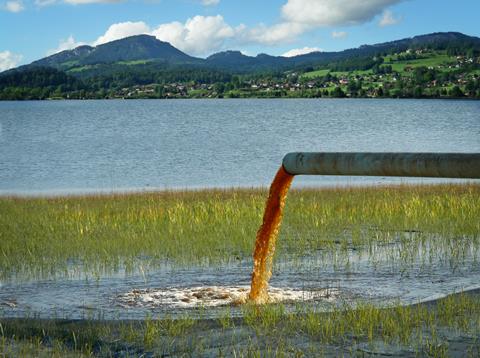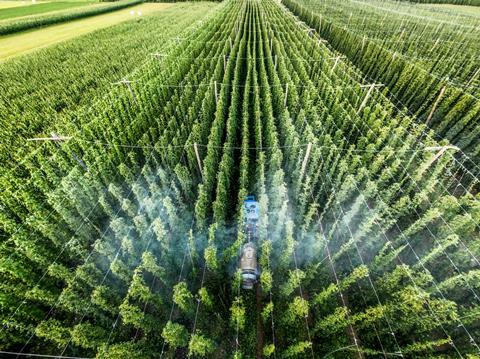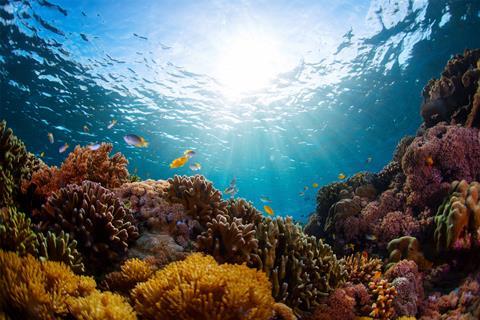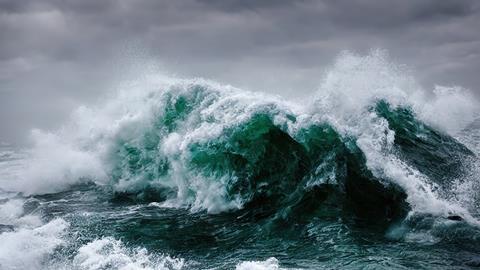The deep expanse of the Earth’s mysterious marine habitat is teeming with opportunities for scientific discovery, including solutions to the world’s most pressing health crises. Among its rich biodiversity are tiny microbes with tremendous potential. As superbug viruses ramp up and microbes across the globe grow more resistant to antibiotics, these organisms may be exactly what the doctor ordered. Today, researchers are using the latest developments in biotechnology to uncover a powerful opponent to these complex pathogens.
Does the ocean store nature’s antidote?
As scientists traversed the frigid waters of the Arctic Sea in 2020, they discovered an unexpected and pleasant surprise — actinobacteria. The phylum is responsible for producing 70% of known antibiotics to prevent harmful bacteria from duplicating and worsening disease. However, actinobacteria are usually found on land.
Researchers believe ocean microbes have a greater variety of chemical compounds than terrestrial sources. This is likely due to the marine environment’s harsh conditions, such as temperature fluctuations, pressure, lighting, and salinity. For this reason, many wonder if marine-derived actinobacteria are a better option for fighting widespread superbugs.
In the latest study, scientists examined hundreds of samples of newly discovered compounds collected from the actinobacteria hiding inside marine invertebrates. They tested the bacteria from four species against enteropathogenic E. coli and found that two genera — Rhodococcus and Kocuria — presented robust antibacterial results.
One of the study’s authors — Dr. Päivi Tammela from the University of Helsinki — emphasized that the pharmaceutical industry isn’t looking to eradicate bacteria entirely but is focusing on substances that weaken virulence. This gentler approach to treatment is better because bacteria have difficulty building resistance to medications, while patients experience fewer side effects. According to a press release regarding their research, Dr. Tammela shared that the marine compounds inhibited the potential severity of the enteropathogenic E. coli and not its growth.

Superbugs are on the rise amid increasing antibiotic resistance
In 2024, the World Health Organization announced a breakout of hypervirulent Klebsiella in 16 countries, including the United States. The bacteria are usually found in human feces and lead to several types of infections, such as pneumonia, meningitis, and bloodstream infections. Unfortunately, Klebsiella is demonstrating antibiotic resistance, including to carbapenems — an important treatment for bacteria resistant to multiple drugs.
Millions of superbugs form each year, affecting people worldwide and from all demographics. In the United States, these bacteria are transmitted to 3 million Americans and kill 35,000 annually, many of whom experience little effect from medication. The burden of these bacteria is increasing, too.
According to one study, 1.91 million antimicrobial-resistant deaths from bacterial infections could occur worldwide by 2050. Most of these cases will transpire in South Asia, Latin America, and the Caribbean, primarily among those 70 or older.
What causes antibiotic resistance?
Resistance to antibiotics increases the risk of severe disease. It also enables bacterial infections to spread rapidly throughout communities. Surprisingly, many preventive measures against superbugs and overprescribing antibiotics come down to proper hygiene.
Some of the contributing factors to this dire situation include the following:
-
Potable water scarcity.
-
Poor sanitation and hygiene.
-
Inadequate disease prevention at home, health care facilities, farms, and workplaces.
-
Limited access to diagnostic testing, treatments, and vaccines.
-
Unawareness and lack of knowledge.
Outdated pollution guidelines can also impact antibiotic resistance and the rise of superbugs. For example, the industrial sector may emit harmful chemicals and pollutants into waterways, providing ideal conditions for bacterial growth. The bacteria will eventually develop survival capabilities to withstand antibiotic effectiveness.
Many water systems are already contaminated with antibiotics, allowing bacteria to strengthen their resistance. This may become even more prevalent in the U.S. as the Trump administration rolls back some key provisions in the Clean Water Act, underscoring the importance of state-level regulatory guidance.
Although superbug cases were down during COVID-19, 52% of patients received at least one antibiotic, while 36% received several upon hospitalization, particularly early in the pandemic when patients with similar symptoms to pneumonia entered the hospital. Likewise, diagnostic testing for COVID-19 wasn’t available at that time.
Pathologist Rumina Hasan from the Aga Khan University in Karachi, Pakistan, says many doctors give antibiotics just in case, especially when they’re not confident in the diagnosis. She believes this occurred during the pandemic due to an influx of new information. Likewise, doctors become accustomed to using certain drugs to fight illness, which can be a difficult trend to change.

The risks of sourcing ocean microbes for antibiotics
Although the prospect of using microbes from the ocean for new antibiotics is exciting, scientists must consider the risks. For example, marine environments are highly polluted, which may make collecting safe samples challenging.
Excessive nutrient runoff — especially nitrogen and phosphorus from agricultural waste — stimulates the growth of harmful algal blooms. These blooms deplete oxygen, creating areas where marine life can’t survive. The bacteria in these algal blooms are also hazardous to human health because they contaminate seafood and drinking water and lead to respiratory issues.
Heavy metals from human activities like mining, untreated sewage for irrigation, and synthetic fertilizers, herbicides, and pesticides also end up in the ocean. Mercury and cadmium are often the most prevalent in aquatic environments. The metals may alter how bacteria function and help them build resistance to potential treatments. Scientists may also have difficulty separating the metals from useful compounds.
In a study of ocean surface water bacteria, researchers found that 70% of marine compounds were resistant to ofloxacin, 95% to clindamycin,n and 58% to clarithromycin. All of the samples had developed a resistance to novobiocin.
One of the scientists, doctoral graduate Adenike Adenaya, said the results suggested a dire need to decrease the amount of antibiotics entering coastal waters. Otherwise, their accumulation in surface water could negatively impact bacterial diversity and allow for adaptation before health care professionals can use them in new treatments.

Future considerations for the creation of marine-derived antibiotics
A world immune to the positive effects of critical treatments gives rise to public health crises as worsening superbugs sweep the globe. Scientists must consider several factors before pursuing marine-derived antibiotics if they hope for them to quell antibiotic resistance.
Environmental protection
One of the greatest challenges researchers have when sourcing marine microbes for superbug therapies is preserving the environment while sustainably utilizing natural resources. The world’s dependence on marine ecosystem services has already left the aquatic landscape vastly degraded, even more so due to pollution, overfishing, and eutrophication.
Additionally, drug evaluators have approved 21 marine-derived medicines globally, which means the exploitation of aquatic biodiversity is underway. If the ocean is a viable source for new drugs, it requires better protection against pollution and impairment that can potentially harm essential microbial communities.
Investment in research and development
The medical and pharmaceutical sectors must invest in comprehensive marine exploration, research, and drug development to leverage ocean bacteria for new treatments. In 2024, the Biden-Harris Administration provided $16.7 million in funding toward ocean technological innovation, prioritizing biodiversity, climate change adaptation, and sustainability. As financial opportunities arise, ocean science researchers must apply these funds toward developing cutting-edge equipment and laboratories for marine exploration and drug production.
Efficacy and safety
The biotechnology industry requires comprehensive and accurate screening processes to eliminate human health impacts. This is even more critical due to the high pollution risk associated with marine microbial samples. Likewise, they need to better understand the requirements for optimal drug potency and uncover compounds that lessen virulence instead of killing the bacteria.
These objectives for efficacy and safety require robust training in biotechnology. Also, collaboration with the ocean science community is necessary to understand how bacteria build resistance in marine ecosystems.

Regulatory compliance
Bioprospecting in the marine environment is rampant as biotechnologists search for resources for various products. However, these quests occur on the high seas, where there are currently few guidelines for preventing degradation and exploitation.
The need for international agreements for marine resource extraction is crucial. Many players in biotechnology are encouraging public data sharing for insights into ocean biodiversity without needing to take additional specimens, which could decrease damage to the ocean floor. The UNESCO eDNA Expeditions pilot program has already collected nearly 400 samples and maintains a database with information on 196,177 ocean organisms.
Medical researchers also require regulatory oversight for testing and approving new marine-derived antibiotics. However, ensuring the safe and responsible development of new drugs demands collaboration between scientists, regulatory bodies, and governments.
The Food and Drug Administration already has a comprehensive review process for approving human-use antibiotics. As scientists continue to utilize marine bacteria in drug research, they will likely need to strengthen their procedures to meet the needs of changing scientific discovery.
A biodiverse marine environment delivers hope for a healthier tomorrow
There has never been a more critical time for addressing antibiotic resistance than now, as superbugs become more prevalent worldwide. Although research on the medicinal possibilities of ocean microbes is in its infancy, researchers believe harnessing the power of these tiny organisms could be key to developing the next generation of antibiotic treatments.








No comments yet